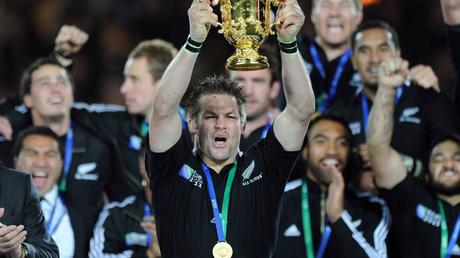
You may have noticed that there are often corrections or clarifications posted on page 3. I recently received a few emails commenting on this and coming to the conclusion that we are more wrong. Today I want to correct this assumption.
When I was new to journalism and someone pointed out an error in an article, journalists usually went to great lengths to avoid having to correct the error. It was a common practice to "correct" mistakes by writing another story and putting the correct information in that second story - a process which meant that the original error was never acknowledged and reported to the public.
Fortunately, times have changed and we are now taking a proactive approach. That's why you see more fixes and clarifications: because we're transparent with you about every mistake we make, and we correct even the smallest mistakes. You may have seen in Thursday's newspaper that we posted a correction because we called out the former All Black captain Ritchie, instead of Richie, McCaw.
Of course, we want to get it right the first time, and our reporters and editors know they need to triple-check everything they write. But we are human beings, and no matter how hard we try, mistakes will creep in. Sometimes people give us incorrect information. Other times, situations change between writing and publishing.
Our fault now is always to clarify and correct when needed. No more burying corrections. Thing 'S Editorial Code of Conduct states, "We are committed to correcting errors as quickly as possible and being transparent about disclosing our errors. "
Things the Corrections and Clarifications Policy can be viewed at www.stuff.co.nz/about-stuff, and we publish a list of all corrections and clarifications, in addition to the disclosures we publish in the journal and online at the story itself.
This approach to fixes is now best practice in the United States, where respected media take a fix everything (and sometimes even have to fix a fix) approach.
The based in the United States Trust project asserts that the media can show their commitment to fairness and accuracy by posting corrections or clarifications as quickly as possible.
A Gallup and the Knight Foundation Report 2018 found that nearly 90 percent of those surveyed said the two things most likely to build trust in news outlets were a media's commitment to accuracy and to correct mistakes quickly and openly .
I keep an ongoing list of errors coming from the Wellington Newsroom, and I'm happy to tell you that the number of articles needing correction or clarification has steadily declined this year. So if you see any corrections on page 3, know that it's because we're more transparent, not because we're more wrong.
Send your brickbats and bouquets, or even just your comments, to: [email protected]
In the newsroom: Joanna Rix, Chief Information Officer
You never see his name in the newspaper, but his influence is felt in almost every story you read. Joanna Rix - or Joe as she is called, a relic of her childhood, a nod to how Nancy Drew's George was a girl with a boy's first name - is the chief information officer at The Dominion Post, which means she leads the day-to-day information operations. She joined us last year after working in the print production team, where she oversaw the publication of 45 dailies and community newspapers, and previously led the editorial staff of Your weekend insert. He's also the most organized person I know.
Joe, what's the most rewarding thing about your job?
To be in the privileged position of being able to make a difference and drive change - whether for our readers, the people we tell stories or our fantastic team of journalists. And you can't beat the adrenaline rush of being in a newsroom when a big story breaks out!
What do you miss the most about your home country of South Africa?
Of course people, but I hadn't realized how much I would miss the wildlife. To be woken up by the nasal and loud cries of hadedas. Elephants, giraffes, zebras, baboons, impalas and even rhinos silhouetted against a vibrant sunset as they drink at a wildlife park watering hole just an hour from home. Feed the moms in our backyard. I don't miss snakes and mosquitoes.
What is your happy place in Wellington?
Choose a beach, any beach! Growing up in landlocked Pretoria, then living and working in landlocked Johannesburg before moving here, I never tire of the ocean. The many moods of Wellington Harbor still cheer me up every morning as I walk through the Ngāūranga Gorge.

